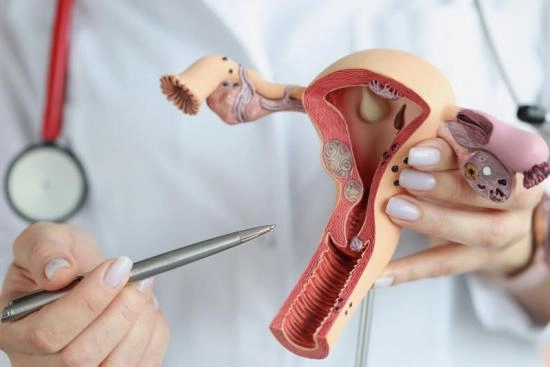In Turkey, myomectomy offers an effective solution for women suffering from uterine fibroids, benign tumors that affect the uterus. The goal of this surgical procedure is to remove the fibroids and relieve the troublesome symptoms they can cause.
- Women who suffer from symptoms caused by uterine fibroids
- It depends on the size, location and number of uterine fibroids, as well as the surgical technique used
- About 80 %
Best Clinics with Verified Reviews

- Multispecialized hospital
- 7 operating rooms
- Capacity é of 170 beds
Myomectomy in Turkey: What is it?
Myomectomy is a surgical procedure to remove uterine fibroids while preserving the patient's uterus.
Uterine fibroids, also known as myomas, are non-cancerous tumors that grow in the muscle of the uterus in women. Although fibroids are usually benign, they can cause symptoms such as pelvic pain, heavy periods, and fertility problems.

Symptoms of uterine fibroids (myomas)
Uterine fibroid surgery may be an important consideration if the patient has the following symptoms:
- Heavy or longer than normal menstrual periods.
- Pelvic pain and discomfort.
- Constipation and bloating.
- Anemia that is resistant to medical treatment.
- Infertility.
- Pain during intercourse.
- Urination problems.
It's important to note that the presence of multiple fibroids, especially large ones (up to 20 cm),can affect the uterus' ability to contract. It's also worth noting that many women with large fibroids may not experience any symptoms if the fibroids are located in less sensitive areas of the uterus.
On the other hand, a small fibroid located in a sensitive area such as the endometrial cavity can cause significant symptoms and even serious complications, despite its small size.
For young women, it's generally preferable to have a myomectomy rather than a hysterectomy (removal of the entire uterus) to preserve the possibility of future pregnancy.
Myomectomy techniques in Turkey
In Turkey, myomectomy, the surgical removal of uterine fibroids, can be performed using a variety of approaches, each with its own advantages and specific indications.
The technique used depends on the size, location and number of fibroids present in the patient.
Laparoscopic technique
Laparoscopic myomectomy is a minimally invasive technique that uses small incisions and a camera to visualize the uterus and remove fibroids. It is appropriate for fibroids of moderate size and number. It is not appropriate for large or complex fibroids.
This approach allows for faster recovery with less scarring and minimal postoperative pain.
Robotic technique
Robotic myomectomy involves the use of a robot for greater precision and dexterity. This more precise, minimally invasive approach is often used for the most complex cases or in patients with a history of abdominal surgery.
Abdominal myomectomy
Abdominal myomectomy involves a larger incision in the abdomen to allow access to the uterus. This technique is often considered for large or multiple fibroids or when laparoscopic techniques have failed.
Abdominal myomectomy allows for complete removal of fibroids, even in complex situations.
Hysteroscopic technique
Hysteroscopic myomectomy is the removal of fibroids inside the uterus using a hysteroscope. This procedure is less invasive than traditional abdominal myomectomy surgery because it does not involve an incision or cut in the abdomen.
Instead, a hysteroscope is inserted through the cervix into the uterus, allowing the surgeon to visualize the fibroids and remove them using special surgical tools. This technique is ideal for small fibroids that do not protrude into the uterine cavity.
In consultation with an experienced gynecologist in Turkey, patients can discuss the various options and choose the technique best suited to their situation.
Post-operative phase of uterine myoma removal
Myomectomy is generally considered to be a safe and effective procedure for treating fibroids in women who wish to preserve their fertility.
Potential risks
However, as with any surgical procedure, there are potential risks, including:
- Bleeding.
- Infection.
- Anesthesia-related complications.
Recovery and convalescence
Recovery time varies depending on the surgical technique used and the complexity of the procedure. In general, patients can return to work within two weeks of surgery. However, it is advisable to avoid strenuous physical activity for several weeks after surgery.
Although there are risks, the benefits of the procedure can outweigh the disadvantages in many cases.
If you think you may have uterine fibroids or are experiencing symptoms related to this condition, contact our doctors in Turkey to find out if myomectomy is an appropriate option for you.
Myomectomy and fertility preservation in Istanbul clinics
Myomectomy can sometimes improve a patient's fertility by removing fibroids that block the fallopian tubes or distort the uterine cavity, making it easier to conceive. However, in some cases, the surgery can damage the uterine tissue, causing scarring and adhesions that can affect fertility.
Hysteroscopic myomectomy is a less invasive procedure that preserves fertility through minimal incisions and allows for faster recovery. Conversely, abdominal or laparoscopic myomectomy, which requires larger incisions, can result in loss of uterine tissue, which may affect fertility.
It is important to consult with your gynecologist in Turkey to determine the most appropriate treatment option for fibroids, taking into account your fertility goals and medical history.
Following myomectomy, it may be advisable to undergo a fertility evaluation to identify any underlying issues that may be affecting your ability to conceive. In certain cases, medically assisted reproductive techniques, such as in vitro fertilization, may be recommended to help you conceive.
Share this page






